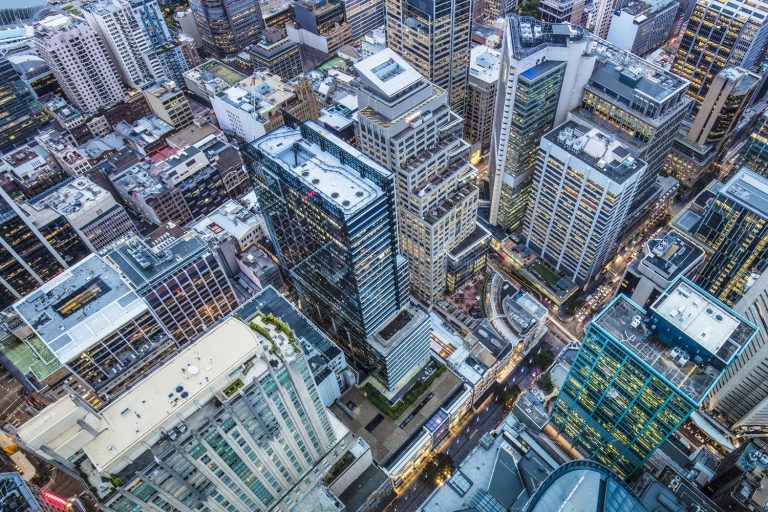Rapid rise of e-commerce is transforming the industrial landscape

The rapid rise of e-commerce is changing the Australian economy and a look at the latest figures from realcommercial.com.au reveals industrial property is one asset class that’s benefitting from COVID-19.
Industrial property is booming thanks to increased demand for space created by online shopping in this pandemic.
The year 2020 dealt a major blow to many bricks and mortar retailers, particularly those with little or no exposure to selling online. Despite the challenges faced by some in the retail sector, there is no doubt Australians were still spending and in fact many switched to spending more online.
Having trended down since 2018, per capita retail turnover surged to record highs in 2020, supported by substantial growth in e-commerce, according to Australian Bureau of Statistics data. The industrial sector has been a major beneficiary of this trend, with commercial property performing particularly well during the economic uncertainty created by the shutdowns and other knock-on effects of COVID-19.
Pandemic fast forwards growth in domestic online sales
Growth in e-commerce is nothing new and online sales as a proportion of total retail turnover have been growing for over a decade. COVID-19, however, has significantly accelerated this trend. As the chart above shows, the percentage of retail turnover transacted online increased by 340 basis points when comparing the December quarters in 2019 and 2020. This accounts for over 10% of the total retail spend by Australian consumers.
Based on the pre-pandemic ABS retail sales data, I estimate it would have taken another three years for online sales to reach the same level achieved in just months as COVID-19 began rewriting the way Australian consumers shopped.
To keep up with demand, many online retailers have had to rethink both their space requirements and locality to customers. COVID-19 sent global supply chains into disarray, with some online retailers looking to mitigate this risk by increasing their store of stock ready for shipment, adding to the demand for larger warehouses.

Due to the pandemic, many retailers have had to rethink where to stock their goods in a location easily accessible for deliveries to meet the growing demand in online shopping. Picture: Getty
Additionally, as competition in Australia’s e-commerce sector grows, delivery times will become increasingly important, and are likely to drive demand for last mile logistics spaces, the final destination of goods before they reach consumers near urban hubs.
The development of Amazon’s Oakdale West Fulfilment Centre in Kemps Creek, New South Wales, is an example of how e-commerce is driving change in Australia’s economy overall and more particularly in the industrial property market. Due for completion in late 2021, it is being billed as Australia’s largest warehouse, comprising more than 200,000sqm of floor area, and it also claims to be the country’s first multistorey warehouse, rising across four levels.
Woolworths is another retailer looking to increase its industrial footprint in response to growing demand from online sales. Citing supply constraints in its current network, Woolworths is looking to develop several new distribution centres across Australia, including 60,000sqm in Wetherill Park, NSW, 40,000sqm in Heathwood, Queensland, and 36,000sqm in Truganina, Victoria.
More businesses are looking for industrial property

While many retailers have struggled with the economic uncertainty created by COVID-19, demand for large industrial properties and warehouses is up as more consumers switch to online shopping. Picture: realcommercial.com.au/lease
The strong growth in industrial demand can be seen in realcommercial.com.au data.
Over the 12 months ending in December 2020 realcommercial.com.au data shows industrial ‘For Lease’ search volumes rose by 13% while ‘For Sale’ searches were up 21%. Delving deeper into the realcommerical.com.au data, it’s clear that the total industrial space required for businesses has also grown.
The increase in space requirements was most evident in those looking to lease, with 10,000sqm-plus searches seeing the strongest year-on-year growth which was up by 16%. But among those looking to buy, while an increase was seen across all space categories, the sub-1,000sqm search categories saw the most growth.
Search volumes in both the ‘For Sale’ and ‘For Lease’ categories of realcommercial.com.au’s website were well up in every state, with the highest total increases seen in NSW and Victoria. Over the 12 months ending in December 2020, NSW saw growth of 26% in lease searches and 27% in buy searches, while Victoria saw lease searches up 15% and buy searches up 22%.
As well as recording the highest growth in search volumes, NSW and Victoria were also the most sought-after states. Among those looking to lease industrial property, NSW accounted for 32% of all searches, with Victoria at 31%. For those looking to buy, however, Victoria was the most popular with a 37% search share, followed by NSW at 29%.
While there’s evidence that, with social distancing easing, some of the growth seen in online sales is returning to bricks and mortar retailers, the proportion is unlikely to return to pre-COVID levels. Consumers who had previously shopped exclusively in-store have been retrained into new habits and retailers who, in the past, had resisted selling online have had to adapt to survive.
Those trends which saw such strong demand for industrial over 2020 are expected to remain a feature of the market, and another strong year is anticipated for the industrial sector.







